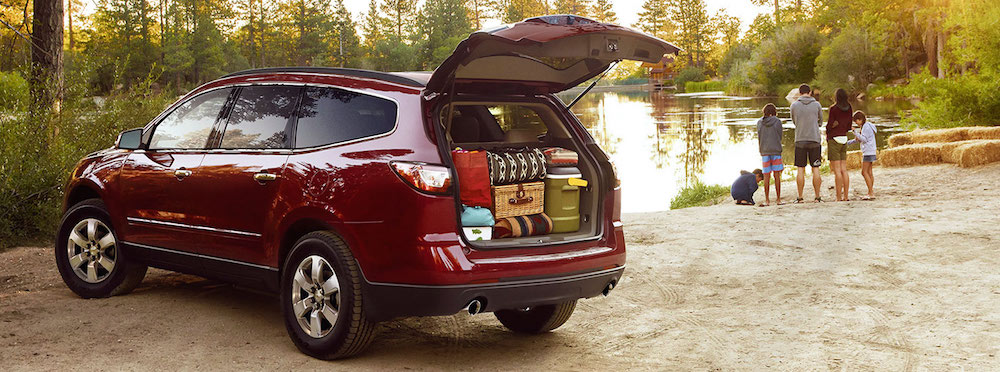
 Your Credit Estimate
Your Credit Estimate
 Your Credit
Your Credit
Your zip code helps us provide you with the most accurate vehicle pricing and vehicle availability.
We estimate your credit score to give you an idea of your monthly payments. To get an accurate payment amount, complete our credit application by clicking the Start Credit Application button below.
start credit application
So often in life when we have to make a big purchase like a house or car, it becomes an emotional one. Even if we try to only focus on rationale, evidence and cold hard facts, it’s hard to ignore that voice inside all of us that simply tells whether we do or do not like something. That’s why it’s so common for consumers to stay within a certain style or brand when shopping for a new car. The reasoning is simple: “I’ve liked it in the past. It’s likely I’ll continue to enjoy it in the future.”
This couldn’t be more true than with the SUV market. Capturing so many hearts in the past five to ten years, SUV’s have been such a rapidly growing segment in the automotive industry. With the economic climate becoming stronger again and manufacturers responding to consumers interests in heightened fuel economy, the demand for SUV’s continues to not just grow, but expand.
In addition to SUV’s, now there are CUVs, or crossovers, another segment that spawned from SUV’s but have a lower ground clearance and drive less like a truck and more like a car. Like SUV’s, they come in many categories as well: Full size SUVs and crossovers, Midsize SUV’s and Crossovers, and keeping in good measure, compact SUV’s and crossovers.
You see them both everywhere and they look similar enough, so how are you to know which is which? What exactly is the difference between a Crossover and an SUV?
The simple answer is: platform. The base that the vehicle is placed on determines whether it’s a crossover or SUV. An SUV uses the chassis of a truck while a crossover is based on a car’s platform. The difference is that cars/crossovers have a frame that is connected to the body making for cohesive architecture, while SUV’s frames are built separately from the body and then later placed together.
This difference is most noticeable in the drive. SUV’s tend to feel larger and more bulky when driving, like a truck. They’re going to take truck-like qualities whereas a crossover is going to drive more smoothly, like a car.
Also, consider that manufacturers can list their vehicles however they choose, meaning they don’t have to follow any particular guidelines in advertising a Ford Explorer as an SUV even though it’s built on a car’s platform. If it works better for them to sell an Explorer as an SUV rather than a crossover, that’s how they’re going to list it.
For this, along with many other, reasons is why you normally see SUV/Crossover as one category and while it’s not meant to be confusing, it sure can be. Hopefully, this helped clear things up a bit for you!
Like so many families deciding which vehicle will best fit their specific needs, budgets are something most have to work within. Because SUV’s are larger and do have more truck like qualities, they also come with a larger price tag and have costs that are greater, as well. Fuel economy isn’t going to be as impressive on an SUV than it will on a crossover, either. However, the answer becomes clear if you answer “yes” to either of these questions: 1) do you have a boat or something you routinely tow? 2) Do you live in a climate where driving through the snow is part of your daily life?
The additional weight of a full-size SUV becomes not only necessary but appreciated when towing or driving through heavy snow. Sure, snow tires are exceptionally helpful and necessary in winter conditions, but the weight and height, along with drive modes of an SUV is going to make all the difference in safe winter driving.